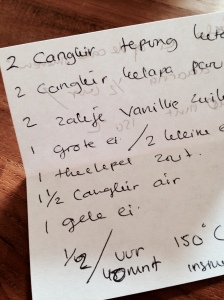 |
| A project engineer is always in-between every parties working on the project. |
I am not sure if it is true, but I think only two engineering fields have project engineer as a job option. The first is chemical engineering, the other one is civil engineering. Although the science involved were completely different, the nature of the "project" is the same: it is a building project. As a chemical engineer you build a chemical plant, and as a civil engineer you build, well, buildings. Or bridges. But you know what I mean.
For those who don't have an engineering background, this is the way I explain what a project engineering job looks like: it is like being a wedding organizer. You have the marrying couple as the client with a wash-list of demands. On the other hand, you have contact with caterers, designers, venue owners, whom you can use to fulfill the couple's demands. You are the middle person, who integrate the demands and the supply to create a beautiful wedding. This also means that when your supplier (caterer, etc) ruin their job, you are the one to blame and you would need to clean the mess.
It is easier to imagine now, isn't it?
Now you can imagine how the work starts: I had a client with a list of specifications of the plant they want to build, and a set of budget. Let's say the client wanted to build a beer brewery. Sometimes the sales department has arrange the specifications and budget, sometimes I still had to compose it. I liked this part as I could learn the newest technology developed by our clients (although this is not part of the job). The specifications covers only the most important things required to design a plant, like how much beer should be produced in an hour, and what is the flow/pressure/composition of the feeds (water, wheat, nitrogen gas) that will be supplied by the client. Also mentioned were the materials to be used (steel? titanium? aluminium?) and the norms to be applied. I will talk about this later.
When all specifications are fixed, the next step is to draw. There is the more basic drawing, we call it process flow diagram (PFD), and more detailed drawing, which is the Piping and Instrumentation Diagram (P&ID). Imagine designing a house: first you have the drawing where only the rooms and the sizes are mentioned, and later on you will have a detailed picture with the lamp position, electricity connections, and wall thickness. PFD is the basic drawing and P&ID is the one you use to really building the plant. I would make the PFD/P&ID with pen and paper, and the drafter will use their charm and make them a beautiful drawing. The client will have a look, give suggestion, and a few corrections were required before I could start to "size" the equipment and instruments.
Then I started to "size" the equipment and instruments. Like the word says, I had to determine the required size of vessels, tubing, valves. Furthermore, I have to choose which supplier should deliver the stuff. Most often than not, the sizes were determined by the choices you have in the market. Many mails were sent and calls were done during this stage to ask for the quotes. Normally the first quote will not be the correct one, and revisions of the quotes were required. I also had to keep a list of the specifications of the equipment. As I had to specify every single valve, the list is quite long.
During this stage, I wrote many emails with similar content: "Please send me a price and delivery time for type A valve, with maximum pressure and temperature of C bars and D celsius, with E inch nominal size, and F type of connection". When I took this job, I did not know that I should also specify whether I would like to have a G 1/2 inch connection, or a NPT 3/4 inch female connection, or a welded connection, from which class. It looked arbitrary to me, yet it can be very annoying when I got it wrong. Imagine you have everything is ready, and you cannot connect the pump with the rest of the equipment because fitting is not correct.
This "sizing" can take a while. However, you know that if you are organizing something, you are chasing with time. Here it is the same game. It can take a while to get a quote that finally match the demands, especially for large equipment like reactors. Then I could finally place an order, but it also took a while to have them delivered. When you apply a fancy material or norm, it could take half a year to deliver a valve. Sometimes, the equipment was delivered with a mistake and I had to return it to the supplier to get if fixed.
The construction phase was started when most of the (correct) equipment and instruments are delivered. We will sit together, the manager, the technicians, and me. Here we would agree on the versions of P&ID to be used, and communicated the predicted difficulties.
During the construction, I would regularly walked to the construction hall, and check if things were done properly. Here I would get many questions to clarify the P&ID. Sometimes I get complaints, like there is not enough space in the frame to place the equipment nicely. Or they asked if they could change the position of this or that valve, because it will make the construction easier. Not all questions were easy to answer. Sometimes I need to re-calculate the design, or ask the manager if this or that changes were okay.
The last stage before the delivery was performing the tests to see if the plant worked as intended. However, before the real tests, many small tests should be done, like checking if all instruments were placed and numbered correctly, if all electricity connections are properly connected. Then the leak test was performed. Each section were leak-tested separately. Sometimes the test can only be performed after office hours, like the X-ray test to check the welded connections.
I made long hours in this construction and test phase. The planning was so tight that the sizing, construction, and testing phases overlap each other.
To be continued.






